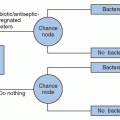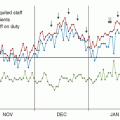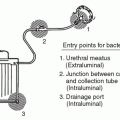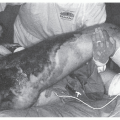Country |
ICU Type |
Number of patients |
CLA-BSI per 1,000 CL-days |
VAP per 1,000 device-days |
CA-UTI per 1,000 device-days |
Year |
Ref |
Argentina (INICC Study) |
Adult |
3,319 |
30.3 |
46.3 |
18.5 |
2004 |
(239) |
Argentina (INICC Study) |
Adult |
2,525 |
2.7 |
— |
— |
2004 |
(52) |
Argentina |
Adult |
— |
11.4 |
— |
— |
2002 |
(240) |
Albania |
Adult, PICU, NICU |
968 |
— |
40.0 |
41.0 |
|
(86) |
Brazil (INICC Study) |
Adult |
1,031 |
9.1 |
20.9 |
9.6 |
2008 |
(36) |
Brazil |
NICU |
1,443 |
17.3 |
3.2 |
— |
2010 |
(87) |
Brazil (INICC Study) |
Adult, PICU |
320 |
34.0 |
26.0 |
— |
2003 |
(57) |
Brazil |
PICU |
515 |
10.2 |
18.7 |
1.8 |
2003 |
(88) |
Brazil (INICC Study) |
NICU |
6,243 |
3.1 |
4.3 |
— |
2007 |
(195) |
China (INICC Study) |
Adult |
391,527 |
3.1 |
20.8 |
6.4 |
2011 |
(51) |
China (INICC Study) |
Adult |
2,631 |
7.66 |
10.46 |
1.3 |
2012 |
(146) |
Colombia (INICC Study) |
Adult |
2,172 |
11.3 |
10.1 |
4.3 |
2006 |
(40) |
Cuba (INICC Study) |
Adult |
1,982 |
2.0 |
52.5 |
8.1 |
2011 |
(49) |
Egypt (INICC Study) |
Adult |
473 |
22.5 |
73.4 |
34.2 |
2011 |
(227) |
Egypt (INICC Study) |
PICU |
143 |
18.8 |
31.8 |
— |
2011 |
(227) |
El Salvador (INICC Study) |
PICU |
1,145 |
10.1 |
12.1 |
5.8 |
2011 |
(48) |
El Salvador (INICC Study) |
NICU |
1,270 |
16.1 |
9.9 |
— |
2011 |
(48) |
India (INICC Study) |
Adult |
10,835 |
7.9 |
10.4 |
1.4 |
2007 |
(44) |
India |
Adult, PICU, NICU |
— |
0.48 |
21.9 |
0.6 |
2010 |
(89) |
India |
NICU |
— |
27.0 |
— |
— |
2011 |
(90) |
Iran |
Adult |
106 |
147.3 |
275 |
137.5 |
2004 |
(91) |
Mexico (INICC Study) |
Adult |
1,055 |
23.1 |
21.8 |
13.4 |
2006 |
(42) |
Morocco (INICC Study) |
Adult |
1,731 |
15.7 |
43.2 |
11.7 |
2009 |
(47) |
Peru (INICC Study) |
Adult |
1,920 |
7.7 |
31.3 |
5.1 |
2008 |
(45) |
Peru |
PICU |
414 |
18.1 |
7.9 |
5.1 |
2010 |
(92) |
Philippines (INICC Study) |
Adult |
2,887 |
4.6 |
16.7 |
4.2 |
2011 |
(50) |
Philippines (INICC Study) |
PICU |
252 |
8.23 |
12.8 |
0.0 |
2011 |
(50) |
Philippines (INICC Study) |
NICU |
1,813 |
20.8 |
0.44 |
— |
2011 |
(50) |
Poland (INICC Study) |
Adult |
847 |
4.01 |
18.2 |
4.8 |
2011 |
(53) |
Saudi Arabia |
NICU |
— |
8.2 |
— |
— |
2009 |
(93) |
Tunisia |
Adult |
340 |
15.3 |
4.4 |
— |
2006 |
(94) |
Tunisia |
Adult |
647 |
14.8 |
— |
— |
2007 |
(95) |
Turkey (INICC Study) |
Adult |
3,288 |
17.6 |
26.5 |
8.3 |
2007 |
(43) |
Turkey |
Adult |
509 |
11.8 |
27.1 |
9.6 |
2010 |
(96) |
Turkey |
Adult |
6,005 |
2.8 |
21.2 |
11.9 |
2011 |
(97) |
Lebanon (INICC Study) |
Adult |
666 |
5.2 |
8.1 |
4.1 |
2011 |
(52) |
Kuwait |
Adult |
1,173 |
5.5 |
9.1 |
2.3 |
2008 |
(214) |
China |
NICU |
638 |
18 (per 1,000 umbilical-days) |
63.3 |
— |
2007 |
(215) |
Turkey |
NICU |
600 |
3.8 |
13.76 |
— |
2012 |
(241) |
Turkey |
Adult |
204 |
— |
— |
19.02 |
2012 |
(242) |
Lithuania |
PICU |
1,239 |
7.7 |
28.8 |
3.4 |
2009 |
(235) |
Croatia (INICC Study) |
Adult |
369 |
8.3 |
47.8 |
6.0 |
2006 |
(197) |
Costa Rica (INICC Study) |
Adult |
125 |
4.65 |
29.9 |
— |
2009 |
(198) |
Macedonia (INICC Study) |
Adult |
1,558 |
1.47 |
6.58 |
0.45 |
2010 |
(222) |
Tunisia (INICC Study) |
PICU, NICU |
367 |
8.65 |
5.56 |
0.0 |
2010 |
(223) |
INICC 8 countries: Argentina, Brazil, Colombia, India, Mexico, Morocco, Peru, and Turkey (INICC Study) |
Adult, PICU, NICU |
21,069 |
18.5 |
24.1 |
8.9 |
2006 |
(32) |
INICC 18 countries: Argentina, Brazil, Chile, Colombia, Costa Rica, Cuba, India, Kosovo, Lebanon, Macedonia, Mexico, Morocco, Nigeria, Peru, Philippines, El Salvador, Turkey, and Uruguay (INICC Study) |
Adult, PICU |
43,114 |
9.2 |
19.5 |
6.5 |
2008 |
(33) |
INICC 18 countries: Argentina, Brazil, Chile, Colombia, Costa Rica, Cuba, India, Kosovo, Lebanon, Macedonia, Mexico, Morocco, Nigeria, Peru, Philippines, El Salvador, Turkey, and Uruguay (INICC Study) |
NICU |
1,323 |
14.8 |
7.5 |
— |
2008 |
(33) |
INICC 25 countries: Argentina, Brazil, China, Colombia, Costa Rica, Cuba, Greece, India, Jordan, Kosova, Lebanon, Lithuania, Macedonia, Mexico, Morocco, Pakistan, Panama, Peru, Philippines, El Salvador, Thailand, Tunisia, Turkey, Venezuela, and Vietnam (INICC Study) |
Adult, PICU |
144,323 |
7.6 |
13.6 |
6.3 |
2010 |
(34) |
INICC 25 countries: Argentina, Brazil, China, Colombia, Costa Rica, Cuba, Greece, India, Jordan, Kosova, Lebanon, Lithuania, Macedonia, Mexico, Morocco, Pakistan, Panama, Peru, Philippines, El Salvador, Thailand, Tunisia, Turkey, Venezuela, and Vietnam (INICC Study) |
NICU |
9,156 |
13.9 |
9.5 |
— |
2010 |
(34) |
INICC 36 countries: Argentina, Brazil, Bulgaria, China, Colombia, Costa Rica, Cuba, Dominican Republic, Ecuador, Egypt, Greece, India, Jordan, Kosova, Lebanon, Lithuania, Macedonia, Malaysia, Mexico, Morocco, Pakistan, Panama, Peru, Philippines, Puerto Rico, El Salvador, Saudi Arabia, Singapore, Sudan, Sri Lanka, Thailand, Tunisia, Turkey, Uruguay, Venezuela, and Vietnam (INICC Study) |
Adult, PICU |
295,264 |
6.8 |
15.8 |
6.3 |
2011 |
(35) |
INICC 36 countries: Argentina, Brazil, Bulgaria, China, Colombia, Costa Rica, Cuba, Dominican Republic, Ecuador, Egypt, Greece, India, Jordan, Kosova, Lebanon, Lithuania, Macedonia, Malaysia, Mexico, Morocco, Pakistan, Panama, Peru, Philippines, Puerto Rico, El Salvador, Saudi Arabia, Singapore, Sudan, Sri Lanka, Thailand, Tunisia, Turkey, Uruguay, Venezuela, and Vietnam (INICC Study) |
NICU |
15,420 |
12.2 |
9.0 |
— |
2011 |
(35) |
INICC 15 countries: Argentina, Brazil, Colombia, Dominican Republic, India, Jordan, Malaysia, Mexico, Morocco, Peru, Philippines, El Salvador, Thailand, Tunisia, and Turkey (INICC Study) |
NICU |
13,251 |
13.7 |
9.7 |
— |
2011 |
(167) |
CLA-BSI, central line-associated bloodstream infection; VAP, ventilator-associated pneumonia; CA-UTI, catheter-associated urinary tract infection; Ref, reference; ICU, intensive care unit; PICU, pediatric intensive care unit; NICU, neonatal intensive care unit; CL, central line; INICC, International Nosocomial Infection Control Consortium. |
|








